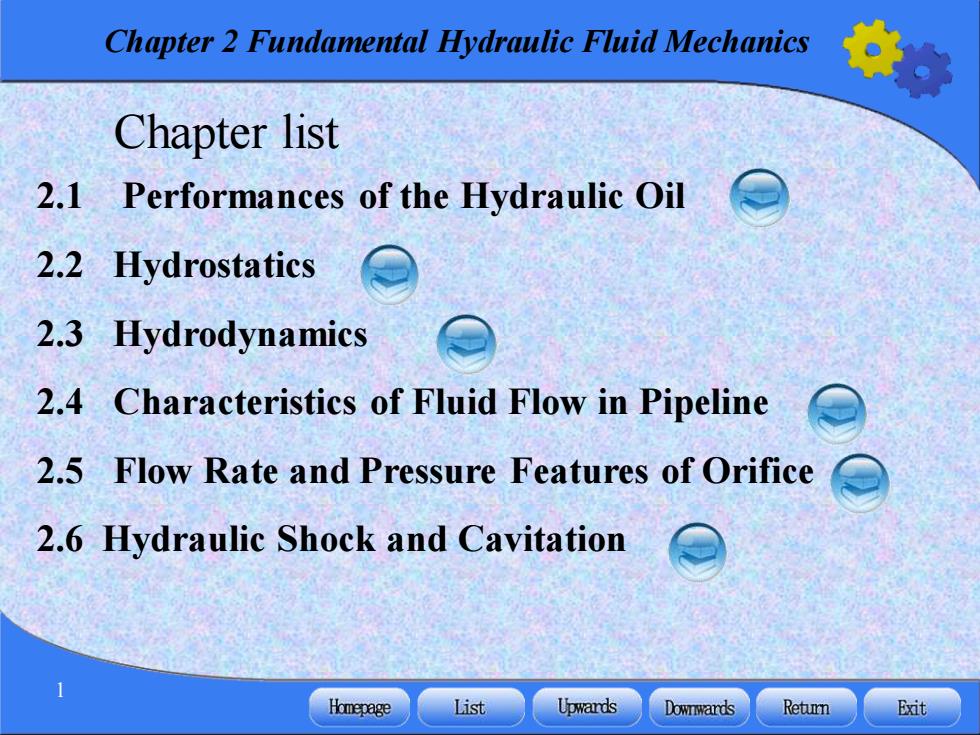
Chapter 2 Fundamental Hydraulic Fluid Mechanics Chapter list 2.1 Performances of the Hydraulic Oil 2.2 Hydrostatics 2.3 Hydrodynamics 2.4 Characteristics of Fluid Flow in Pipeline 2.5 Flow Rate and Pressure Features of Orifice 2.6 Hydraulic Shock and Cavitation Homepage List Upwards Downwards Retun Exit
Chapter 2 Fundamental Hydraulic Fluid Mechanics 1 2.1 Performances of the Hydraulic Oil 2.2 Hydrostatics 2.3 Hydrodynamics 2.4 Characteristics of Fluid Flow in Pipeline 2.5 Flow Rate and Pressure Features of Orifice 2.6 Hydraulic Shock and Cavitation Chapter list
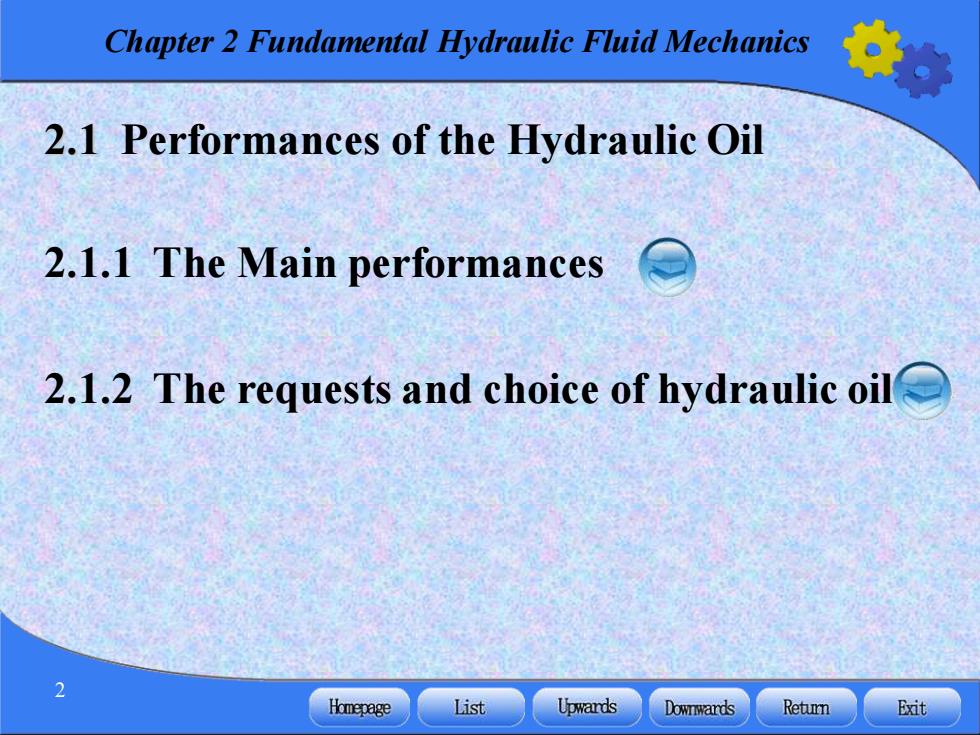
Chapter 2 Fundamental Hydraulic Fluid Mechanics 2.1 Performances of the Hydraulic Oil 2.1.1 The Main performances 2.1.2 The requests and choice of hydraulic oil Homepage List Upwards Downwards Retumn Exit
Chapter 2 Fundamental Hydraulic Fluid Mechanics 2 2.1.1 The Main performances 2.1.2 The requests and choice of hydraulic oil 2.1 Performances of the Hydraulic Oil
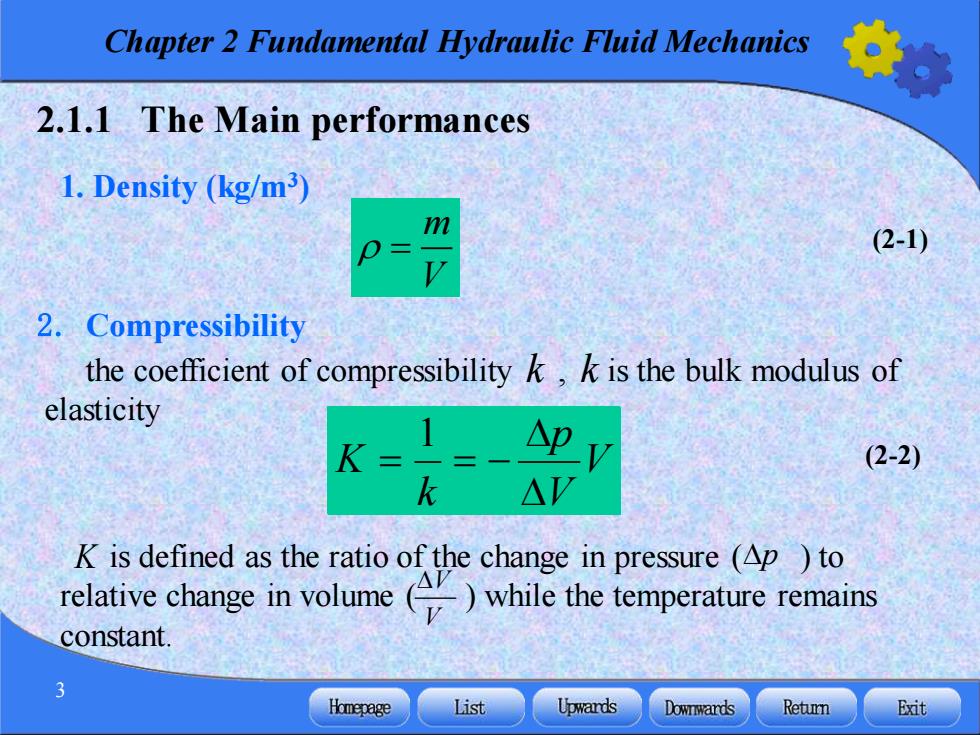
Chapter 2 Fundamental Hydraulic Fluid Mechanics 2.1.1 The Main performances 1.Density (kg/m3) (2-1) 2.Compressibility the coefficient of compressibility k,k is the bulk modulus of elasticity (2-2) △V K is defined as the ratio of the change in pressure (Ap )to relative change in volume (while the temperature remains constant 3 Homepage List Upwards Downwards Retumn Exit
Chapter 2 Fundamental Hydraulic Fluid Mechanics 3 1. Density (kg/m3 ) 2. Compressibility 2.1.1 The Main performances V V p k K = = − 1 the coefficient of compressibility , is the bulk modulus of elasticity (2-2) (2-1) k is defined as the ratio of the change in pressure ( ) to relative change in volume ( ) while the temperature remains constant. V V p m V = k K
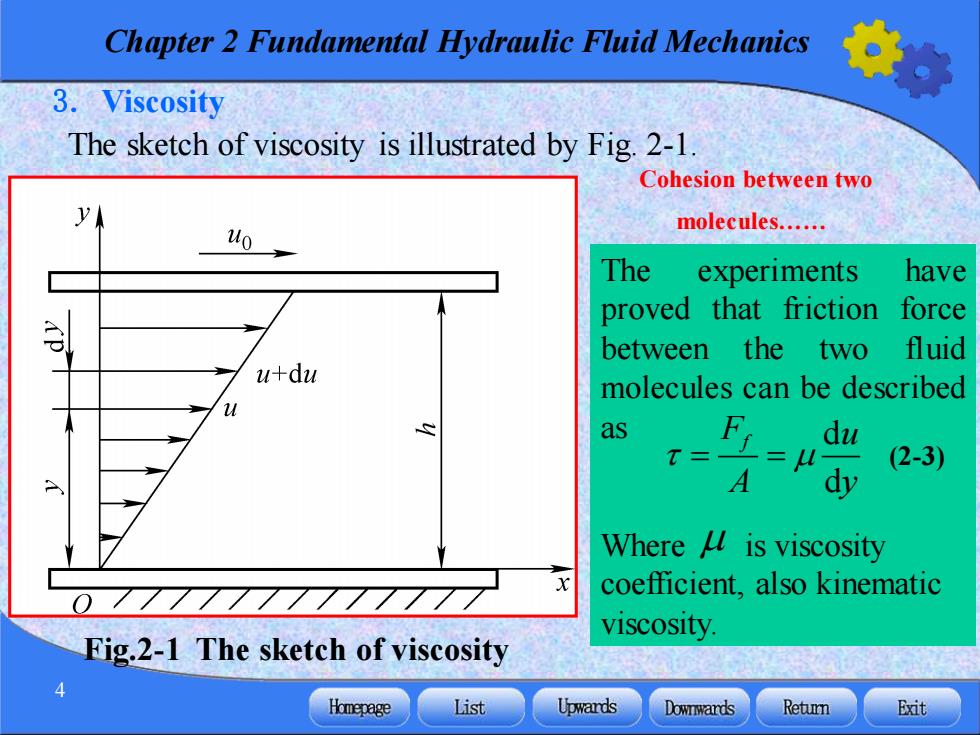
Chapter 2 Fundamental Hydraulic Fluid Mechanics 3.Viscosity The sketch of viscosity is illustrated by Fig.2-1 Cohesion between two uo molecules. The experiments have proved that」 friction force between the two fluid u+du molecules can be described as du 2-3) A dy Where is viscosity coefficient,also kinematic viscosity Fig.2-1 The sketch of viscosity Homepage List Upwards Downward达s Retumn Exit
Chapter 2 Fundamental Hydraulic Fluid Mechanics 4 3. Viscosity The experiments have proved that friction force between the two fluid molecules can be described as Where is viscosity coefficient, also kinematic viscosity. Fig.2-1 The sketch of viscosity d d Ff u A y = = The sketch of viscosity is illustrated by Fig. 2-1. (2-3) Cohesion between two molecules
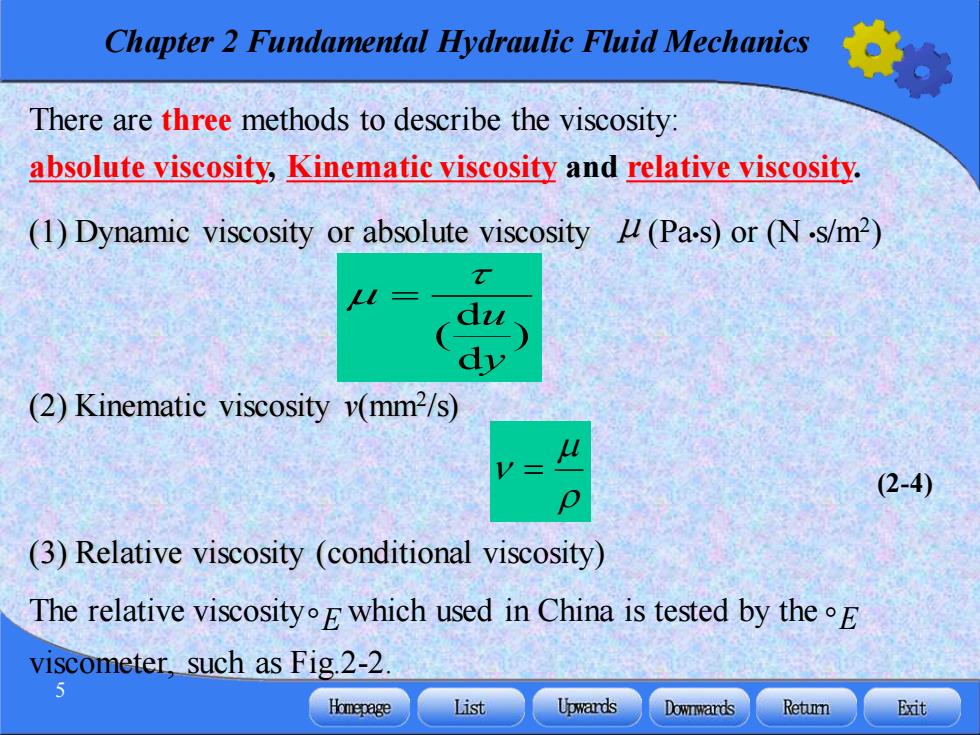
Chapter 2 Fundamental Hydraulic Fluid Mechanics There are three methods to describe the viscosity: absolute viscosity,Kinematic viscosity and relative viscosity. (1)Dynamic viscosity or absolute viscosity (Pa-s)or (N-s/m2) dy (2)Kinematic viscosity v(mm2/s) p (2-4) (3)Relative viscosity (conditional viscosity) The relative viscosityowhich used in China is tested by theE viscometer,such as Fig.2-2 5 Homepage List Upwards Downwards Retumn Exit
Chapter 2 Fundamental Hydraulic Fluid Mechanics 5 There are three methods to describe the viscosity: absolute viscosity, Kinematic viscosity and relative viscosity. (1) Dynamic viscosity or absolute viscosity μ(Pa•s) or (N •s/m2 ) (2) Kinematic viscosity ν(mm2 /s) = d ( ) d u y = (2-4) (3) Relative viscosity (conditional viscosity) The relative viscosity which used in China is tested by the viscometer, such as Fig.2-2. E E